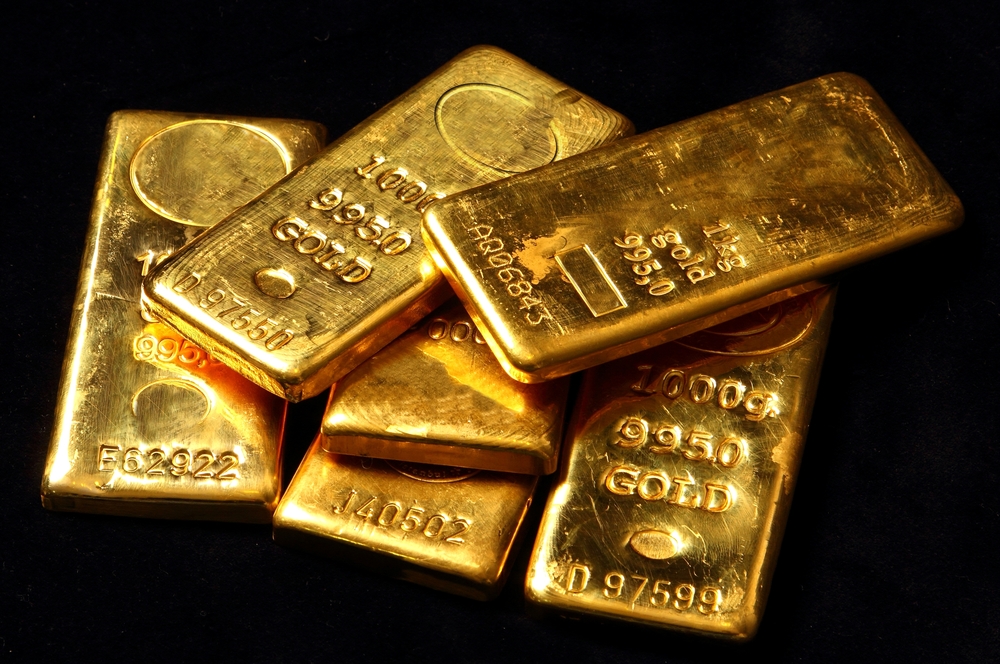Business
Gold Will Climb To $2,200 An Ounce By Year End, Says Industry Insider

Ronald-Peter Stoeferle, the managing partner of Incrementum, says gold is in a “stealth” bull market. Additionally, he expects prices to climb above $2,200 per ounce by the end of the year.
Speaking with Kitco News, Stoeferle says proof of the stealth bull market in gold is actually silver outperforming gold and junior mining stocks outperforming senior mining stocks.
“It’s pretty obvious, we’re in a stealth bull market in gold. What are the reasons for that? First of all, we’re seeing that gold is rising in every currency. Gold is up 27% in US dollar terms, we’re seeing that silver is outperforming gold, so silver is up almost 50% since the beginning of the year, so the gold/silver ratio is falling is a great confirmation for the strength of gold. Then we are seeing that actually the mining equities are outperforming the price of gold itself, so we are seeing outperformance of the large caps versus gold, we are seeing the juniors outperform the seniors, those are all confirmations.”
A Sign of a Healthy Bull Market?
He says the recent pullback in gold prices is also a positive sign of a healthy bull market. Stoeferle says there was too much optimism as prices climbed and sentiment got too high.
“We saw that when gold went over $2,000 everyone was writing about gold and sentiment felt a bit too positive. Then we came down, but it seems that there’s so much capital waiting on the sidelines at the moment that we just don’t see any deeper correction. Can gold go to $1800, $1850? Of course. But it is just normal and healthy within the course of this bull market to take a breather.”
Institutional demand will take gold to $2,200 an ounce by the end of the year, according to Stoeferle.
“September from a seasonal perspective is one of the very best months for gold and I think we can easily go to $2,200 or even higher by the end of the year. The important message is we are in a stealth bull market, I think this party has only just begun, and we are seeing the most important driver going forward is the institutional demand is coming back and I think that is what is really going to move the price of gold.”
Benefits of Higher Inflation
He says that gold investors, mining stock investors and central bankers make odd bedfellows; all three benefit from one thing: higher inflation.
“Just look at inflation-sensitive assets like TIPS and also gold, silver, the commodity space, they are all rising pretty strongly in the last couple of months, so I think the market is already telling us: be careful, inflation is on the horizon. And that’s actually what the Federal Reserve and central bankers and politicians want. So you could say that gold investors and mining investors are basically sitting in the same boat as central bankers, which feels a bit odd.”
Very few investment managers have lived through a period of strong inflation or even stagflation, and Stoeferle says that means many will be caught under-invested as gold prices rise.
“The average investment manager nowadays is 52-years old so they have never experienced a period of long, strong inflation or even stagflation. So I think this will catch many, many investors on the wrong foot. And at the moment, 0.5% of all assets are invested in gold. So basically there is no allocation at the moment and this will change, and I think really this year marked the beginning of the public participation phase.”
That small allocation to gold will change as people start looking around for the best inflation hedge, says Stoeferle.
“I think with inflation being really what central banks and politicians want to see and want to achieve, many many investors will have to consider “what’s the best inflation hedge out there?” and I think gold made a really solid case not only over the last few decades but over the last couple of centuries.”
Allocation for Gold
Finally, he says a rule of thumb he has come up with is for 8% of your investment portfolio to be allocated towards gold. However, he acknowledges that there are many variables for each investor.
“We crunched the numbers and we came to a rule of thumb of 8-10%. But I think it doesn’t make any sense to stick to those numbers because it depends on the rest of your portfolio, it depends on your time preference, it depends on your risk preference and so on, but if you believe that inflation will become a concern, if you think that real rates will stay very low, if you believe at some point we will have to deal with our debt, then I think you should have a pretty high allocation to gold and also the mining space.”
Up Next:















